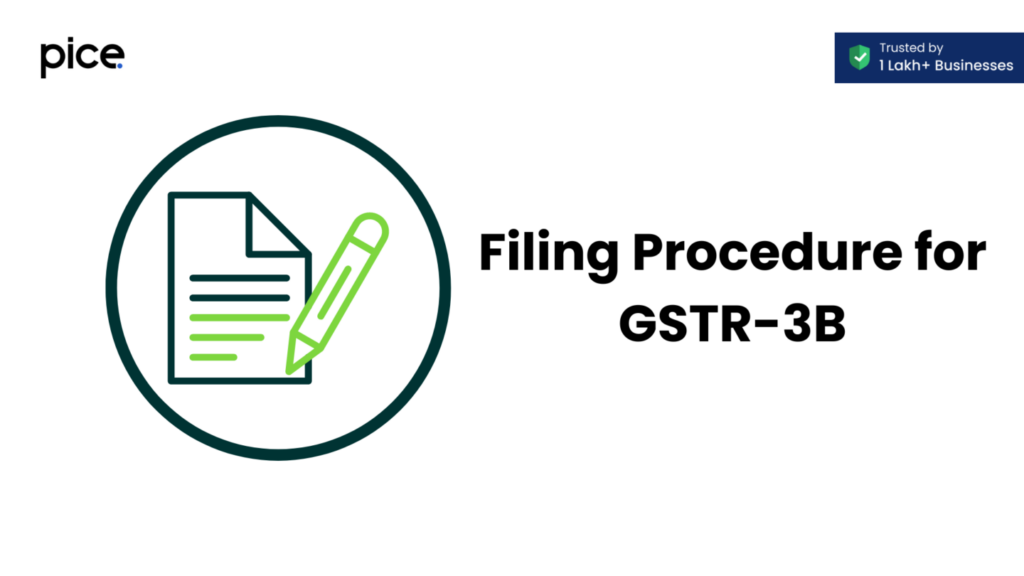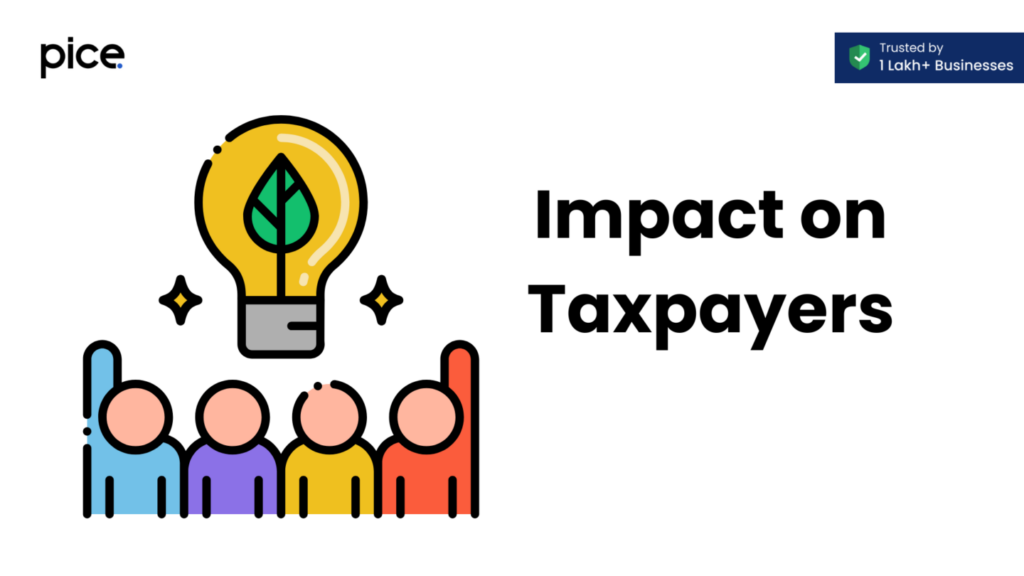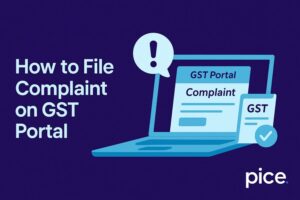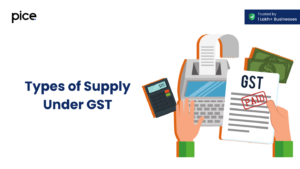Amendment in GSTR-3B
- 26 Aug 24
- 11 mins

Amendment in GSTR-3B
Key Takeaway
- New Table 3.1.1: Introduced for detailed reporting of taxable supplies via e-commerce operators.
- Updated Headings: Revisions in Table 3.1 and Table 3.2 headings for clearer reporting requirements.
- Detailed ITC Reporting: Enhanced granularity in reporting eligible, ineligible, reclaimed, and reversed Input Tax Credit (ITC).
- Filing Procedure: Updated step-by-step process on the GST portal for accurate GSTR-3B submission.
- Taxpayer Impact: Requires meticulous ITC tracking and frequent reconciliations to avoid penalties.
In September 2022, the GSTN introduced a revised format for reporting data in GSTR-3B. This updated format offers a detailed breakdown of Input Tax Credit (ITC), distinguishing between eligible, ineligible, restricted, reversed and reclaimed credits, among other related details. In this blog, we will walk you through the changes introduced by the GSTR-3B new amendment, highlighting the updated requirements for taxpayers to accurately report their ITC in Form GSTR-3B.
Updates in Form GSTR-3B
In July 2022, the government updated the GSTR-3B return format, specifically changing how data is reported in Tables 3 and 4. Here are the key revisions:
Heading of Table 3.1 Updated
The heading for Table 3.1 has been revised from ‘Details of outward supplies and inward supplies liable to reverse charge’ to ‘Details of outward supplies and inward supplies liable to reverse charge (other than those covered in 3.1.1)’.
Added New Table 3.1.1
A new table as outlined below, designated as Table 3.1.1, has been added to Form GSTR-3B. You can download the format of the table.
| Nature of Supplies | Total Taxable Values | Integrated Tax | Central Tax | State/UT Tax | Cess |
| Taxable supplies on which e-commerce operator pays tax under section 9(5). [details to be furnished by e-commerce operator] | - | - | - | - | - |
| Tax on sales made by the registered person through an e-commerce operator, which required to pay tax under section 9(5). [details to be furnished by the registered person who is engaged in making supplies through an e-commerce operator] | - | - | - | - |
Heading of Table 3.2 Updated
The heading for Table 3.2 has been revised from ‘Out of supplies in 3.1(a), details of interstate sales made to unregistered persons, composition taxable persons and UIN holders’ to ‘Out of supplies in 3.1(a) and 3.1.1(i) above, details of inter-state supplies made to unregistered persons, composition dealers and UIN holders’.
Updated Table 4
Two columns in Table 4 of Form GSTR-3B, namely column B for ITC Reversed and column D, have been amended. Here's how the earlier columns and the amended columns in Table 4 of Form GSTR-3B are presented:
| Earlier Columns | Amended Columns |
| (B) ITC Reversed | (B) ITC Reversed |
| 1. As per Rule 42 & 43 of CGST Rules | 1. As per Rule 38, 42 & 43 of CGST Rules and sub-section (5) of section 17 |
| 2. Others | 2. Others |
| Earlier Columns | Amended Columns |
| (D) Ineligible ITC | (D) Other Details |
| 1. As per Section 17(5) | 1. ITC reclaimed which was reversed under Table 4(B)(2) in the previous tax period. |
| 2. Others | 2. Ineligible ITC under section 16(4) and ITC restricted due to PoS provisions. |
Other Updates
- For modifications or additions, the GST Council has advised using the GSTR-1A option form for taxpayers just before filing GSTR-3B.
- The GST Council proposed an amendment in Rule 88B of the CGST Rules so that any amount available in the Electronic Cash Ledger on the due date of filing GSTR-3B, which is debited during filing, will not be considered for calculating interest under section 50 of the CGST Act for late filing of the return.
- The GSTN department has enabled the option to reset and re-file GSTR-3B for certain taxpayers.
- CBIC has waived off interest charges for late filing of GSTR-3B due to technical issues.
- The deadline for filing GSTR-3B was extended until January 10, 2024, for taxpayers from certain districts of Tamil Nadu.
- GST return filers can now seamlessly file their returns as the issue with auto-populating Input Tax Credit (ITC) in GSTR-3B has been resolved.
- The due dates for monthly filing of GSTR-3B from April to July 2023 were extended until August 25, 2023, for taxpayers with principal places of business in Manipur. Additionally, the government has provided relaxation for the quarterly filing of GSTR-3B.
- The Kerala GST Department has issued guidance on a Standard Operating Procedure (SOP) to monitor taxpayers who reverse ineligible IGST Input Tax Credit (ITC) in the GSTR-3B form.
- If GSTR-1 is not filed on time, taxpayers will be unable to file GSTR-3B, leading to late fees and penalties.
- An advisory on GST liability and the variances between GSTR-1 and GSTR-3B (DRC-01B) has been issued.
- The deadline for filing of return form GSTR-3B for May was extended until June 30 for districts in Gujarat: Kutch, Jamnagar, Morbi, Patan and Banaskantha.
Implications of Changes in Form GSTR-3B
The amendments in Form GSTR-3B have updated the headings of Table 3.1 and Table 3.2 to incorporate the new Table 3.1.1. This revision simplifies the structure by integrating additional details within existing sections.
💡If you want to pay your GST with Credit Card, then download Pice Business Payment App. Pice is the one stop app for all paying all your business expenses.
The insertion of Table 3.1.1 and the updated reversal details in Table 4(B), along with other details in Table 4(D), within Form GSTR-3B, carries the following implications:
- The insertion of Table 3.1.1 in Form GSTR-3B has significant implications, particularly for electronic commerce operators and registered persons involved in e-commerce transactions. For e-comm operators, Table 3.1.1(i) mandates the separate reporting of taxable supplies details where GST is paid directly by them. On the other hand, Table 3.1.1(ii) requires registered persons to report taxable supplies where GST is paid by the e-commerce operator on their behalf.
- Amendments in Table 4(B)(1) of Form GSTR-3B now require reporting and reversing ineligible Input Tax Credit (ITC) as per GST rules. Table 4(B)(2) remains unchanged, focusing on eligible ITC details.
- Table 4(D) in Form GSTR-3B now requires regular taxpayers to report reclaimed input credit reversal under Table 4(B)(2).
- Following the amendment, taxpayers need to declare accurate details of ineligible input tax credit under section 16(4) and input tax credit restricted under Place of Supply provisions in Table 4(D)(2).
- The reversal of input tax credit as per section 17(5) is now required to be reported in Table 4(B)(1), whereas it was previously reported in Table 4(D)(1).
Details and Relevance of Table 4 in GSTR-3B
Table 4 in the GSTR-3B return details all Input Tax Credit (ITC) information for a specific return period. It includes:
- ITC Available: Covers ITC on the import of services or goods, capital goods and inward supplies liable to reverse charge
- ITC Distributed: Includes ITC distributed by an Input Service Distributor (ISD)
- Ineligible ITC: Details ITC that is not eligible under the Central Goods and Services Tax (CGST) Act and Rules
It also includes complete details on ITC reversals and reclaimed ITC. Accurate reporting of ITC in Table 4 of Form GSTR-3B is crucial as it determines the net tax amounts and total GST due. Incorrect values can lead to notices and penalties.
Revised Format of GSTR-3B
From August 2022, the government revised GSTR-3B Table 4, making ITC reporting a bit complex. The GSTR-3B new amendment introduced four sections: 4(A), 4(B), 4(C) and 4(D).
- Section 4(A):
In every tax period, Table 4(A) of GSTR-3B auto-populates the total ITC from the GSTR-2B statement, excluding ITC that is unavailable due to place limits or time of supply rules. Taxpayers must accurately categorise their ITC into eligible and ineligible for GSTR-3B reporting. This enables the deduction of ineligible ITCs from the auto-populated total ITC figure.
- Section 4(B):
The revised format of Table 4(B) in the Form GSTR-3B has two parts: 4(B)(1) and 4(B)(2). Taxpayers are now required to report all non-reclaimable reversals of input tax credit in Table 4(B)(1). This includes reversals as per Rules 38, 42, 43 and Section 17(5) of the CGST Act.
On the other hand, taxpayers are required to report all reclaimable reversals of input tax credit in Table 4(B)(2) as per Rule 37, Section 16(2)(b), Section 16(2)(c) of the CGST Act and auto-populated credit notes.
- Section 4(C):
Table 4(C) of the GSTR-3B form displays the net Input Tax Credit (ITC), calculated using the formula: 4(A) – 4(B).
- Section 4(D):
There are also two sections: 4(D)(1) and 4(D)(2) in Table 4(D). Here, taxpayers report Input Tax Credit (ITC) that is not available as per legal provisions. For instance, this includes ITC restricted under Section 16(4) if reported by the unregistered supplier after November 30 of the following financial year or after filing the annual return, whichever comes first.
Filing Procedure for Taxpayers

Here's the filing procedure for taxpayers to follow when submitting their GSTR-3B:
Step 1: Head over to the official GST portal and use the registered credentials to log in.
Step 2: Find the 'Services' tab on the homepage.
Step 3: Click on 'Returns' and then 'Returns Dashboard'.
Step 4: Choose the ‘Financial Year’, ‘Quarter’ and ‘Return Filing Period -Month or Quarter’ from the drop-down menu.
Step 5: Click the ‘SEARCH’ tab.
Step 6: Navigate and click on 'GSTR-3B Monthly Returns'.
Step 7: Click 'Prepare Online', enter all required details and answer the questions as displayed on your screen.
Step 8: Click 'NEXT' to move forward.
Step 9: Select 'Yes' for the first question and proceed with the rest of the form, if applicable for Nil returns.
Step 10: Input applicable taxable values in the displayed tiles, including interest and late fees if applicable.
Step 11: Use the 'Add' or 'Delete' options to make necessary modifications.
Step 12: Click 'Confirm' once all details are verified.
Step 13: Click on the 'SAVE GSTR 3-B’ tab to save the form.
Step 14: Tap on 'SUBMIT' to file the return.
Step 15: Click on the 'Preview Draft GSTR-3B’ tab to review the draft.
Step 16: After successfully submission of return, taxpayers can access the 'Payment of Taxes' tile, where they can click on the 'Check Balance' button to review their cash and credit balances.
Step 17: Choose 'Authorised Signatory' from the drop-down.
Step 18: Select either 'FILE GSTR-3B WITH DSC' or 'FILE GSTR-3B WITH EVC'.
After filing GSTR-3B successfully, you'll get a confirmation message. Click 'OK' to update the status to 'Filed'.
Impact of These Changes on Taxpayers

Here's how the GSTR-3B new amendment has impacted taxpayers:
- All taxpayers are required to maintain a separate ledger for accounting ineligible ITC.
- The new amendment requires detailed invoice-wise tracking to categorise ITC into eligible, ineligible, unavailable, permanently reversible and temporarily reversible categories.
- All reclaimable ITC, including credit notes, must be tracked to ensure accurate claims in the relevant tax period.
- The new amendment necessitates frequent and preferably automated reconciliations of all transactions from GSTR-2B with the Purchase Register (PR).
- Taxpayers must maintain a detailed trail of all ITC-related information at both section and document levels for any future audits or notices.
Key Features of the GSTR-3B Return Form
The following are the key features of the GSTR-3B Return Form that you need to know.
- Each registered taxpayer with a valid GSTIN must file their own GSTR-3B return form.
- GST liability must be settled by the due date for filing GSTR-3B.
- Once filed, GSTR-3B cannot be revised.
- Even when there is no tax liability, filing GSTR-3B is mandatory.
The Bottom Line
The recent amendments to Form GSTR-3B aim to simplify tax reporting for registered businesses, facilitating better GST and business compliances. Under the GSTR-3B new amendment, businesses must calculate input tax credits precisely to avoid penalties and interest, as revisions are not permitted after filing.
 By
By 

















